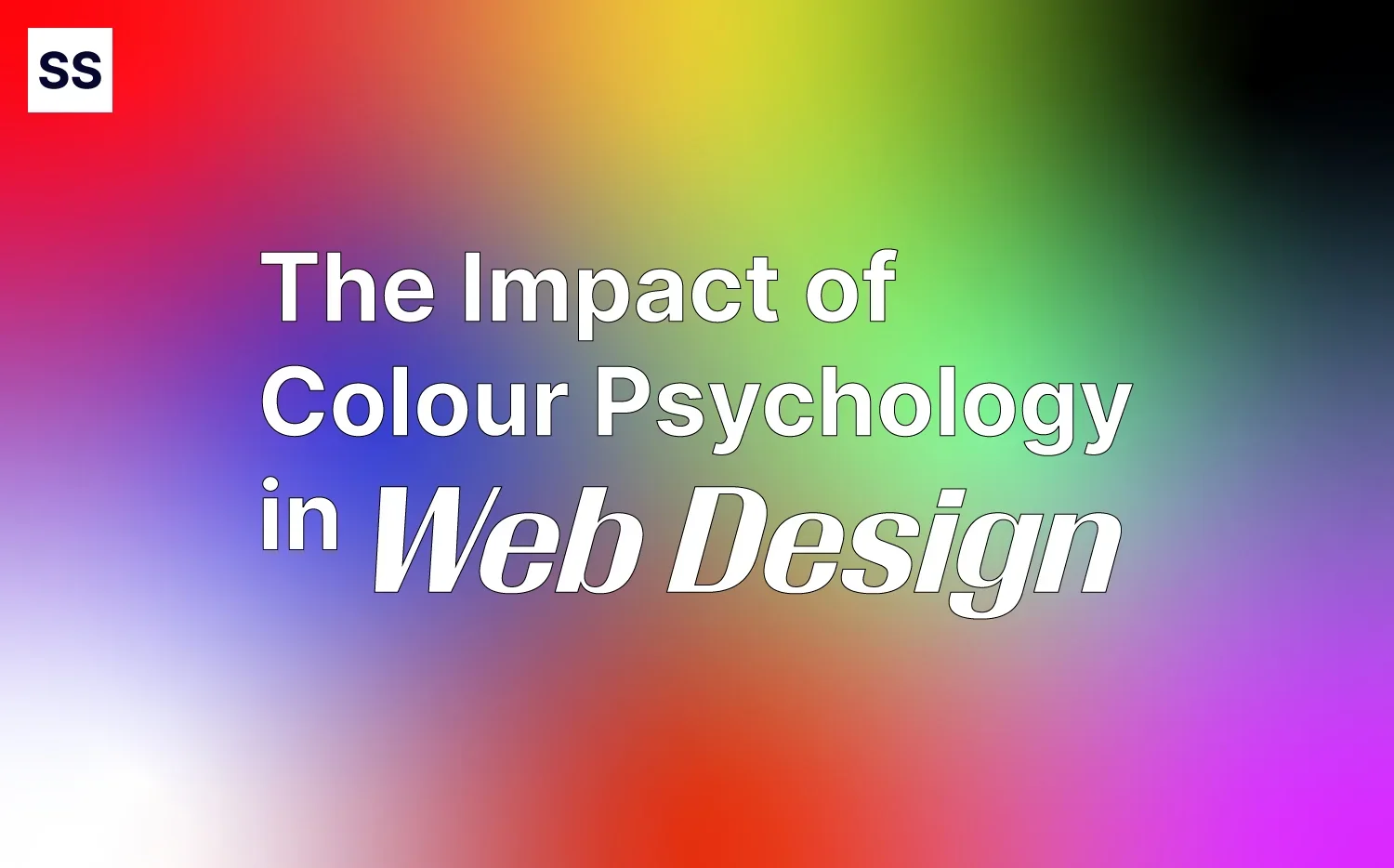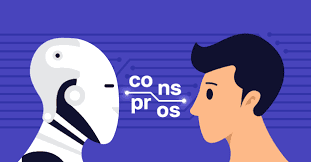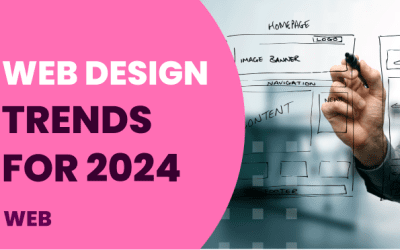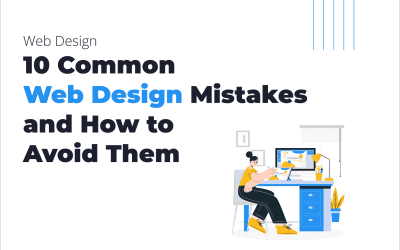In the realm of web design, understanding the psychological impact of colors is crucial. Color psychology in web design is the study of how colors affect perceptions and behaviors when users interact with web content. By leveraging the power of color psychology, designers can create more effective and user-friendly websites.
Key Takeaways:
- Colors can evoke emotions and influence user behavior.
- Different colors can have different meanings in various cultures.
- Strategic use of colors can improve user experience and conversion rates.
The following Article is aimed toasnwer the following questions:
What is the importance of color psychology in web design?
What are some key notes on color psychology in web design?
Can you provide examples of color psychology in web design?
How do you choose the right color for web design?
How does colour psychology play a role in design?
What is a color psychology generator and how is it used?
How are color psychology studies conducted?

The Importance of Color Psychology in Web Design
Why It Matters
Colors are not just about aesthetics; they communicate feelings, evoke emotions, and can even influence decisions. For instance, a red button might convey urgency, prompting users to click, while a blue button might feel more trustworthy.
Cultural Differences
It’s essential to note that color psychology in web design can vary across cultures. For instance, while white might symbolize purity in some cultures, it can represent mourning in others.
User Experience
Colors can significantly impact user experience. A harmonious color palette can make users spend more time on a site, while a jarring combination might drive them away.
Color Psychology in Web Design Notes

The Basics
Every color has associated feelings and emotions. For instance:
- Red: Passion, urgency, excitement.
- Blue: Trust, calm, stability.
- Green: Growth, health, prosperity.
- Yellow: Happiness, caution, warmth.
Accessibility
It’s crucial to ensure that the colors used are accessible to all users, including those with visual impairments. Tools like the color psychology generator can help designers choose accessible color combinations.
Color Psychology in Web Design Examples
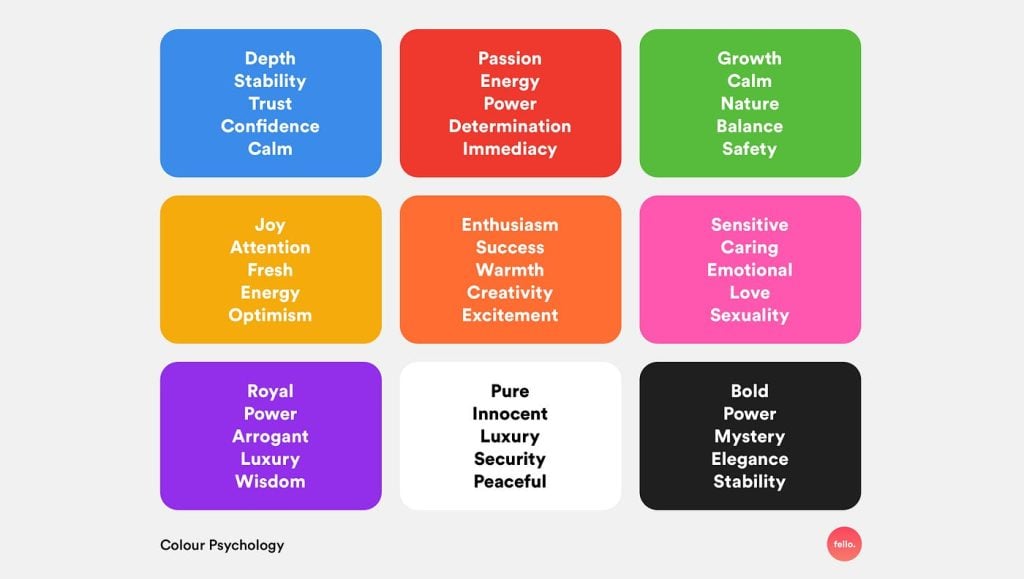
E-Commerce Sites
E-commerce sites often use colors to influence purchasing decisions. For instance, a green ‘Buy Now’ button might be more inviting than a red one.
News Websites
News websites might use a combination of neutral colors for the background and more vibrant colors for headlines to grab attention.
Personal Blogs
Personal blogs might use softer, pastel colors to create a more intimate and personal feel.
Color for Web Design
Choosing the right color for web design is crucial. It’s not just about picking your favorite color but understanding how that color will influence user behavior.
Consistency
Maintaining a consistent color palette across your website can enhance brand recognition and improve user experience.
Contrast
Ensuring proper contrast, especially between text and background, is crucial for readability.
Emphasis
Using colors to highlight important information or call-to-action buttons can guide users through your site.
Colour Psychology in Design
While this article focuses on web design, the principles of colour psychology in design apply to various fields, from interior design to fashion.
Emotional Impact
Colors can evoke a wide range of emotions, from calm and soothing blues to energetic and exciting reds.
Decision Making
In marketing and branding, colors can influence purchasing decisions. For instance, a consumer might be more inclined to buy a product packaged in a color they find appealing.
What is the Psychology of Color in Web Design?
Simply put, it’s the study of how colors affect user behavior and perceptions in the context of web design. By understanding these principles, designers can create more effective websites.
What is Color Psychology in UI Design?
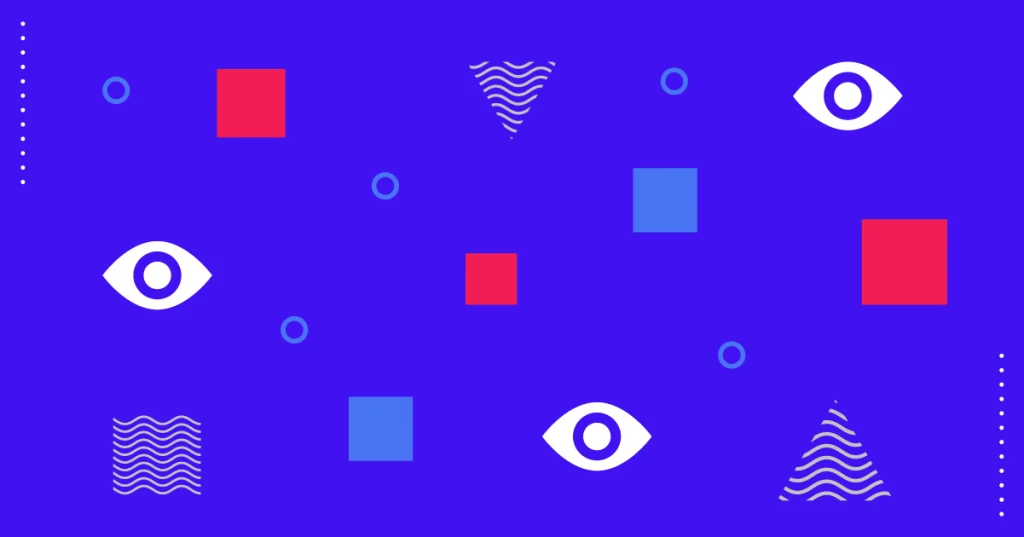
In UI (User Interface) design, colors play a crucial role in guiding users through an application or website. For instance, a red notification might indicate an error, while a green one might signify success.
What Colors Say About Your Website?
Colors can communicate a lot about a brand or website:
- Blue: Trustworthiness, professionalism.
- Red: Excitement, passion.
- Yellow: Optimism, creativity.
- Green: Growth, eco-friendliness.
The Science Behind Colors
Colors have a profound impact on our emotions and actions. The psychology of color in web design is rooted in how our brains perceive colors and the associations we make with them. For instance, blue often signifies trust and calm, while red can evoke feelings of passion and urgency.
The Connection Between Color and Conversions
There’s a scientific link between the color of products and the urge to purchase. When you see a color, a chain of reactions occurs within the hypothalamus in your brain. Hormones are released to your thyroid, triggering emotions that influence behavior. In fact, 62% to 90% of purchasing decisions are based on colors. Thus, understanding the psychology of color can significantly boost conversions for your website.
Where to Use Colors in Web Design
The strategic placement of colors can make a difference in user experience:
- Images: Use colors that resonate with your brand message.
- Pop-ups: Colors can grab attention and convey the pop-up’s purpose.
- Borders: Can be used to highlight or separate content.
- Headlines: Vibrant colors can make headlines stand out.
- Background hues: Should complement the overall design.
- Primary web banners or hero graphics: Use colors that align with your brand.
- Buttons: Especially call-to-action buttons, where colors can influence user actions.
Case Studies on the Psychology of Color
A study published on Moz highlighted how an online slot machine company changed its call-to-action button from green to yellow, resulting in a 187.4% rise in conversions. Another study from the University of Rochester found that the color red, often associated with error markings in academia, can negatively affect academic performance.
10 Colors from the Internet Marketer’s Perception
- Pink: Associated with fun, romance, and youthful femininity. Ideal for websites targeting a female audience.
- Blue: Signifies trustworthiness. Suitable for websites requiring reliability, like online banking.
- Red: Grabs attention and is effective for call-to-action buttons. It evokes passion, power, and sometimes urgency.
- Green: Represents peace, tranquility, and nature. Perfect for environmental or organic product websites.
- Yellow: Represents a carefree and positive mindset. Suitable for children’s products or toys.
- Purple: Exudes elegance and sophistication. Ideal for luxury product websites.
- Orange: Signifies creativity and is attention-grabbing. Suitable for tech or creative websites.
- Gold: Represents power and prestige. Works well with other elegant colors.
- Black: Versatile and contrasts well with other colors.
- Brown: Evokes relaxation and calm. Ideal for health and wellness websites.
Frequently Asked Questions
What is the psychology of color in UI design?
In UI design, colors guide users through an application or website. They can indicate actions, notifications, errors, and successes.
What colors say about your website?
Colors can communicate your brand’s values and message. For instance, green might indicate eco-friendliness, while blue can suggest trustworthiness.
What is design psychology colors?
It’s the study of how colors in various design fields influence perceptions and behaviors.
How do colors affect conversions?
Colors can influence users’ emotions and actions, impacting their decisions to purchase or engage with content.
How do cultural differences impact color psychology in web design?
Colors can have different meanings across cultures. For example, white represents purity in some cultures but can signify mourning in others.

